
Committed to greener beauty for more of us
As a world’s leading natural beauty brand, we have the opportunity to help create a positive impact by leading the way towards sustainable beauty that’s accessible to all.
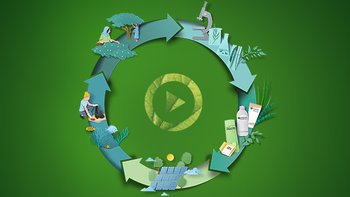
OUR SUSTAINABILITY ENGAGEMENTS IN 5 STEPS

More solidarity sourcing
We empower 670 communities as part of our ingredient sourcing programs.
By 2025, this will include 800 communities.
Green Sciences & formulas
In 2019, our new shampoos and hair care formulas reached an average of 91% biodegradability*.
By 2025, we will create new high performing and respectful formulas for your hair and skin, powered by Green Sciences, such as biotechnologies.
*As per OECD 301 or equivalent tests.
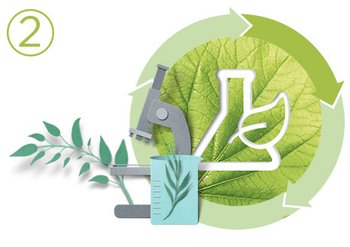
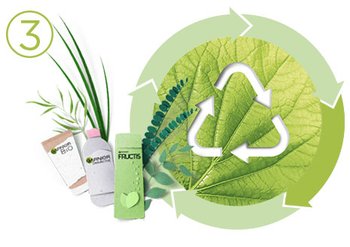
More recycled & recyclable packaging
In 2019, thanks to the use of recycled plastic, we saved 3670 tons of first use plastic. End 2020, Fructis bottles will be made of 100% recycled plastic in Europe and in the US.
By 2025 Garnier aims for all packaging to be made from 100% recycled plastic.
More renewable energies
Since 2005, our plants and distribution centers have cut water by 45% and CO2 emissions by 72%.
By 2025, 100% of our industrial sites
will be carbon neutral.
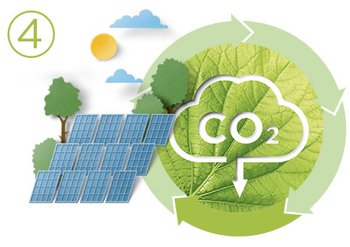

Environmental and Social Impact
Discover the environmental and social impact of your favorite Garnier hair care products.
OUR PARTNER NGOS
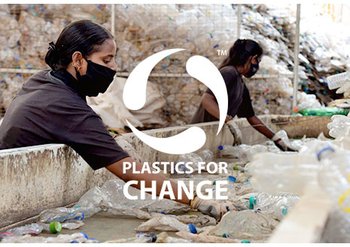
Plastics For Change
This year we joined forces with Plastics For Change to support the holistic development of waste-picker communities and prevent ocean bound plastic in India.
How does Garnier help farmers?
The Solidarity Sourcing program gives people typically excluded from the job market access to work and a sustainable income. We are committed to implementing fair trade practices across the supply chain, seeking to support and empower farmers and workers to help them improve their revenues and livelihoods. We also provide training to improve their skills in agriculture and give them the latest knowledge on organic farming.
How does Garnier help the local economy?
We facilitate access to health services or welfare protection mechanisms for many of our smallholders. In 2019, our Solidarity Sourcing program enabled 670 communities facing social or financial challenges to gain access to or retain a job and fair income. We have also partnered with NGOs to help empower communities through socially responsible or “solidarity” sourcing programmes worldwide.
What does it mean to be sustainably sourced?
When Garnier selects its suppliers, we take into consideration ethical issues, the environmental impact, and social factors. We want our ingredients to be produced and harvested in a responsible and sustainable way. This includes the farmers, the land being used, farming practices, local communities, and many other aspects of sourcing.
Why is sustainable sourcing important?
Garnier feels sustainable sourcing is important because our goal is to ensure that our renewable materials will regenerate in an abundant way, enhancing biodiversity and reducing the impact on climate change.
How can we protect the biodiversity?
Through programs like our Respectful Bee Welfare Program, Garnier sustainably sources all of its ingredients derived from bees through a network of responsible beekeepers and suppliers. Another example is our Solidarity Sourcing program in partnership with PRONATURA, helping 23 Mexican families adopt organic farming practices, including initiatives to preserve biodiversity on the protected reserves surrounding their farms.
What’s Garnier’s sustainable sourcing strategy?
We are striving for 100% of our renewable ingredients to be sourced sustainably by 2022. We are fully committed to protecting biodiversity and the planet by leveraging green sciences to offer our consumers the same high performance while ensuring that every Garnier product is more sustainable. Today, more than half of Garnier’s ingredients come from renewable sources, and by 2025, we aim for 100% of our renewable ingredients to be sustainably sourced.
Sustainable sourcing is also our priority for our packaging. In 2019, 100% of our cardboard boxes and paper product use instructions have a sustainably managed forest certification.
How is Garnier going greener?
We have developed new 98% natural origin formulas and Ecocert-certified organic skincare and continuously reduced our products’ environmental footprints. At our industrial sites, we have significantly lowered our CO2 emissions and water consumption.
We are sourcing more and more of our natural ingredients sustainably every day, launching natural origin formulas within all our product categories. In 2019 we introduced a new organic range. We have improved the sustainability performance of our factories and reduced our use of virgin plastic in packaging while increasing recyclable content.
What is Green Sciences?
Green sciences cover all scientific knowledge, including transforming natural raw materials into high-performing natural ingredients through processes like extraction or fermentation, in a sustainable way that respects the environment. Garnier harnesses the latest life sciences knowledge to unleash the power of nature in our high-performing, sustainable products.
What is green cultivation?
Farming practices that promote the production of natural raw materials in a way that preserves ecosystems and reduces the impact on the environment. This could mean using less water, producing fewer carbon emissions and reducing waste.
How to be beauty responsible?
Garnier was a pioneer in the transparency movement, disclosing the provenance of our ingredients starting in 2017. In 2020, we break new ground by sharing the environmental and social impact of our products through ambitious new environmental labeling.
We source more of our natural ingredients sustainably every day, with natural origin formulas in all our product categories, including our new organic range. We have improved the sustainability performance of our factories and reduced our use of virgin plastic in packaging while increasing recycled content.
Our Green Beauty strategy will enable us to make further progress by taking an end-to-end approach to beauty. This involves commitments to improve our products’ impacts throughout their lifecycle, helping to preserve natural resources, harness clean energy and prevent waste.
What does ‘eco-designed formula’ mean?
With lifecycle assessments, our labs measure the environmental impacts of our products for many years. We focus on improving the biodegradability of our formulas, reducing our water footprint, and lower our products’ impact on the aquatic environment.
What plastics can be recycled?
Most plastics that Garnier uses in our packaging today are PET (Polyethylene Terephtalate), PP (Polypropylene) and PE (Polyethylene). These materials can be recycled and reused several times, and are the most commonly recycled plastic materials in the world.
PCR (Post-Consumer Recycled) plastics are recycled from plastic waste derived from consumer products. Garnier has committed to using 100% PCR plastics or bio-sourced plastics by 2025.
Garnier believes it’s our responsibility to raise awareness of what parts of our products can be recycled. We are developing videos and tutorials on different types of plastic and diverse recycling streams, as well as adding sorting instruction in our product pages.
How does Garnier reduce plastic?
We have based our strategy going forward for achieving eco-designed packaging on 4 pillars: using recycled materials, redesigning and innovating, reusing and recycling.
Innovations
Some of our plastic-reducing innovations that we are most excited about are launching in 2020. UltraDoux solid shampoo, the ultimate “zero plastic” solution, has packaging made of 100% FSC-certified cardboard. The Ultra-Doux Ecopack reduces the quantity of plastic used for our shampoos by 80%. And Garnier Bio Hemp Moisturizer comes in a cardboard based tube.
Existing Products
Our goal is to lighten the plastic used in packaging and replace it with recyclable or recycled plastic instead of using virgin plastic. For this, we need a large, preferably local, source for Post-Consumer Recycled Plastics and other sustainable materials. Working in close partnership with our packaging suppliers and plastic manufacturers, we are developing robust sources of supply for PCR, aiming to reach 100% by 2025.
Payoff
In 2019, our use of recycled plastic saved 3670 tons of virgin plastic. By the end of 2020, all Fructis plastic bottles will be made of 100% recycled plastic in Europe and the US. Using recycled plastic will save 7000 tons of virgin plastic overall in 2020. By 2025 all of our products will be made with zero virgin plastic, and all of our packaging will be recyclable, reusable or compostable, saving 37,000 tons of virgin plastic per year.
Community
We are partnering with the NGO Plastics For Change and will recycle tons of plastic and provide waste pickers with a stable income and access to social services in India. We also feel it’s our responsibility to encourage our consumers to recycle. In this way, we will reduce the leakage of plastic into the environment.
How do we recycle plastic?
Recyclable plastic is collected, cleaned and sorted by plastic type. It is then shredded, washed, melted and reformed into pellets, or granulate. This granulated plastic is used to make new packaging.
The L'Oréal Group created a consortium with CARBIOS to develop biotechnology in recycling.* Garnier will leverage the outcome of this process when designing new packaging, helping to promote a circular economy.
*CARBIOS has developed an enzymatic bio-recycling process for plastics that breaks polymers down to the basic components (monomers) originally used to create them. Once separated and purified, the monomers can be used again to create plastic with a similar performance to virgin plastic, without losing any value through the recycling process.
How to reuse the packaging?
Garnier commits to promoting reusable or refillable systems, piloting new partnerships and models. We partnered with LoopTM (in France) to build innovative circular shopping platforms that replace single-use disposable packaging with long-term reusable plastic packaging.
What is virgin plastic?
Virgin plastic is newly manufactured plastic that has never been used in a product or processed before. Recycling plants take virgin plastic thrown away by consumers and use it as their raw material.
Garnier aims to save 37,000 tons of virgin plastic per year. We are reinventing our packaging so it will be reusable, recyclable or compostable by 2025. By then, we aim for all our products to be made with zero virgin plastic, using instead 100% post-consumer recycled (PCR) plastics or bio-sourced plastics.
How does Garnier reduce the weight of their packaging?
Garnier commits to reduce the weight and size of packaging by redesigning caps and plastic bottles, reducing the size of sachets, and removing liners from sachets. We are also innovating towards new, plastic-free packaging and seeking new alternatives to replace single-use formats.
By reducing the weight of our plastic packaging, we saved more than 592 tons of virgin plastic in 2019. We will continue to lighten our plastic packaging, reaching 858 tons of plastic saved in 2020.
How to reduce co2 emissions?
All of our plants have continually worked on lowering carbon emissions by increasing energy efficiency through better building design and insulation, as well as using energy efficient technologies for industrial processes and finally sourcing more renewable energy locally.
These types of efforts led to us lowering our carbon footprint by 72% from 2005-2019. However, our goal is for all of our industrial sites to become carbon neutral by 2025. We will do that by harnessing technologies best suited to each site: biomethanisation, solar panels, biomass, wind energy, etc.
How to reduce energy consumption?
Within our production facilities and distribution centers, we will continue to optimize our use of energy, with a goal of using 100% renewable energy by 2025.
What is a sustainable factory?
A sustainable factory is one that uses renewable energy and is carbon neutral.
How to reduce the water consumption?
Garnier is re-thinking water use across its sites in order to significantly reduce its industrial water consumption. We already have three “waterloop” factories, where 100% of industrial water use (for cleaning and cooling, for example) is re-treated, recycled or reused water. We no longer need fresh water for these processes.
By treating and reusing high quality water in an internal loop, we are able to reduce our water consumption and the factory’s environmental impact. Our three “waterloop” factories saved more than 8 million liters of water in 2019 compared to 2018, and inspired many other factories worldwide.
How Garnier reduces their carbon impact?
As part of our ongoing efforts to reduce our products’ environmental impact, we will support all our Garnier industrial sites in going carbon neutral and by adopting 100% renewable energy in the next five years.
What actions will Garnier set to protect the ocean?
We are partnering with the NGO Plastics For Change to help provide a community of waste pickers in India with a fair rate for discarded plastic, improve working conditions and promote recycling.
What is plastic pollution?
Plastic pollution has become a pressing challenge in the past few decades. Today more than 350 million tons of all plastic produced annually, and only 20% of plastic waste is recycled worldwide. The rest becomes waste, polluting our environment. Today, over 75% of all plastic produced in the world has become waste. Plastic pollution harms wildlife and natural ecosystems and contributes to climate change.
How much plastic is in the ocean?
Up to 12.7 million tons of plastic leak into the ocean each year. By 2050, scientists predict that plastic will outweigh fish in the ocean. The world is discarding the equivalent of 1 garbage truck full of plastic into the ocean every minute. (Source : UN Environment Programme https://environmentlive.unep.org/marinepollution).
How does plastic get into the ocean?
Plastic pollution in our oceans is largely caused when people don’t have the opportunity to dispose of their waste responsibly. Instead, their plastic waste often enters local rivers, eventually flowing into the ocean. At the heart of the problem, the majority of plastic pollution is currently due to business models supporting single-use packaging; waste mismanagement leaking plastic into the environment; and a supply chain currently producing five times more virgin plastic than recycled plastic.
What are the effects of plastic in the ocean?
More than 800 species of marine animals are affected by plastic pollution, either through ingestion, entanglement or chemical contamination. It is the cause of death of millions of seabirds and marine mammals, some marine species being on the verge of extinction because of plastic ocean pollution. Consumption of plastic by marine creatures causes health issues that spread up the food chain to larger marine animals and finally to the humans who eat them. Plastic in the seas also pollutes the oceanic waters, lowering the oxygen levels and affecting the survival of marine animals including whales, dolphins and penguins. Birds and land animals get caught in the choke-hold of plastic on beaches. It poses a threat to the functioning of marine ecosystems, and micro-plastic particles floating in the ocean are toxic for all living beings.
